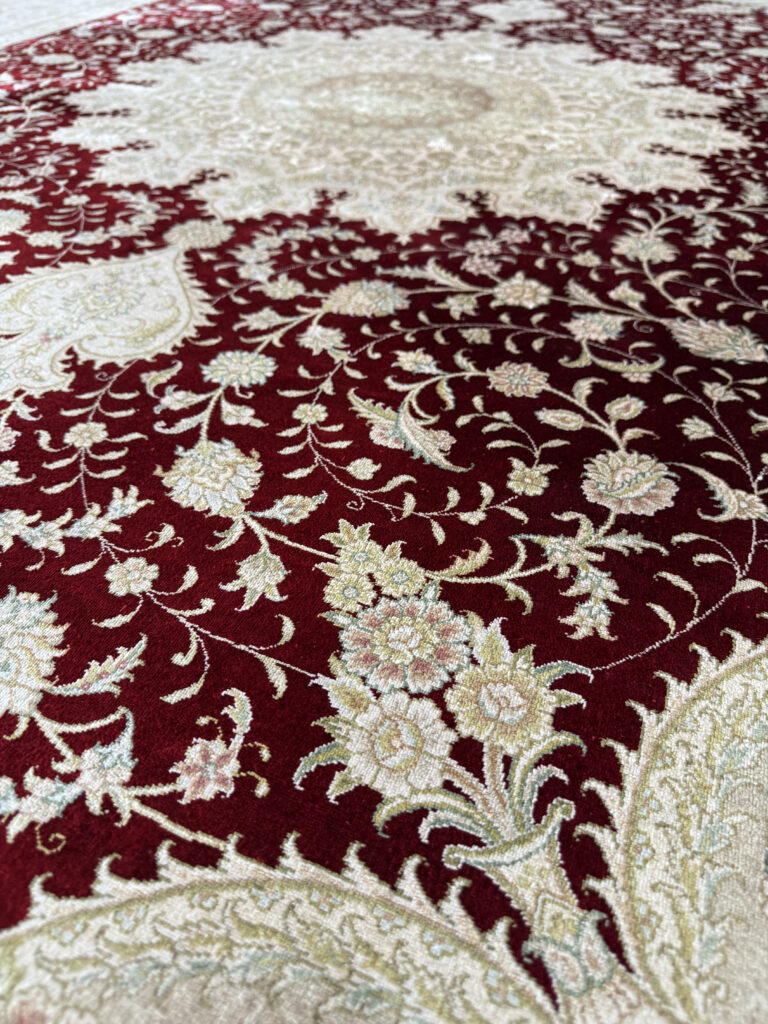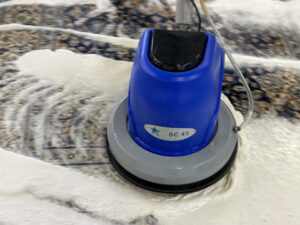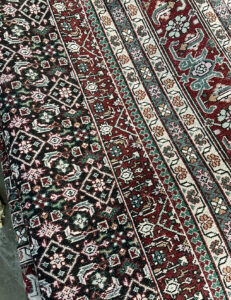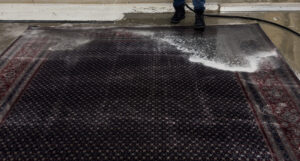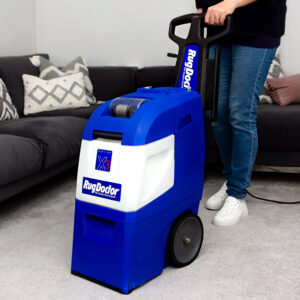Silk vs Wool Rug Cleaning – Why Cleaning Methods Must Be Different
Not all rugs are created equal — especially when it comes to fiber type.
In this blog post, we will provide an in-depth comparison between cleaning silk and wool rugs, exploring why their unique properties require distinct cleaning methods. We will delve into the science behind the fibers, the best practices for maintenance, and common pitfalls that can lead to damage. Understanding these differences is crucial for any rug owner seeking to preserve their investment and the beauty of their home.
Understanding the differences in silk vs wool rug cleaning is essential for maintaining the beauty and longevity of your rugs.
Wool rugs and silk rugs may both be beautiful, handwoven masterpieces… but cleaning them requires entirely different chemistry, pressure, temperature, and drying techniques.
Cleaning rugs is not merely a matter of applying soap and water; it requires a thoughtful approach tailored to the specific material of the rug. Wool and silk rugs, although both prized for their aesthetic appeal, react differently to various cleaning techniques. This distinction is critical to comprehend if you want your rugs to last for generations while maintaining their luster and vibrancy.
Let’s explore why cleaning a silk rug like a wool one can lead to permanent damage — and how we prevent that at Ahmadi Rug.
Wool vs Silk: Key Differences
When considering the cleaning of wool rugs, it’s essential to remember that their resilience allows for more aggressive cleaning techniques, such as soaking and gentle agitation. This flexibility is beneficial for maintaining the rug’s appearance without the risk of damage. For example, using a mixture of warm water and a mild detergent can effectively lift dirt and grime from wool fibers without causing harm.
| Feature | Wool Rugs | Silk Rugs |
|---|---|---|
| Fiber Type | Natural animal hair (lanolin-rich) | Natural protein filament (fine, delicate) |
| Durability | Stronger, flexible | Fragile, easily abraded |
| Cleaning Tolerance | Tolerates gentle agitation | Must avoid friction |
| Dyes | Can be vegetable or synthetic | Often vegetable, highly sensitive |
| Texture | Soft, springy | Smooth, slippery, reflective |
Moreover, understanding the dye process is crucial when cleaning rugs. Many wool rugs are dyed with synthetic dyes, which are more resilient to harsh cleaning methods. In contrast, silk rugs are often dyed with natural vegetable dyes, which can be sensitive to pH levels and water temperature. This sensitivity means that dye testing is vital before proceeding with any cleaning, especially for valuable silk rugs.
Wool Rug Cleaning – Key Considerations
- Responds well to soaking + agitation
- Can tolerate medium-pressure rinsing
- Requires grooming to lift flattened pile
- May trap sand and grit deep in the weft
- Still requires dye testing before any cleaning
Wool rugs are hardy — but they’re not bulletproof. We’ve seen dozens damaged by high-heat, cheap alkaline cleaners, or rushed drying.
Silk Rug Cleaning – What Can Go Wrong Fast
Silk is a luxurious, temperamental fiber. It:
- Shows every water mark
- Loses luster if abraded
- Shrinks when heat is applied
- Stretches or warps when dried improperly
- Is extremely pH-sensitive
In contrast, silk rug cleaning necessitates a much gentler approach. The use of cold water combined with pH-neutral cleaners is imperative to prevent damaging the fibers. Silk rugs can easily sustain irreversible damage from harsh chemicals or hot water. For instance, a simple mistake like using an alkaline detergent can cause the silk to lose its natural sheen and result in permanent discoloration.
Even improper brushing can fracture silk threads — making your $15,000 rug look dull, matted, and uneven.
That’s why we never:
- Use hot water or alkaline soaps
- Machine-wash or spin-dry silk
- Brush or scrub during cleaning
How Ahmadi Rug Cleans Silk & Wool Differently
At Ahmadi Rug, we tailor our cleaning process based on fiber type, dye chemistry, knot density, age, and weave.
For Silk Rugs, we:
- Use cold water and neutral pH solutions
- Pre-condition for dye lock
- Rinse gently by hand, never in a tub
- Dry flat in low-humidity controlled conditions
- Final buff with microfiber (never brush!)
For Wool Rugs, we:
- Dust thoroughly before water hits it
- Pre-treat spots with fiber-safe enzymes
- Hand-soak in customized bath
- Rinse with filtered water
- Dry on racks, groom with wool paddles
No machines. No shortcuts. No outsourcing.
Remember, the proper cleaning of your silk vs wool rug cleaning can prolong its life and maintain its stunning appearance. Don’t leave your investment to chance; choose experts who understand the intricacies of your rugs.
Most Cleaners Don’t Know (or Don’t Care)
We’ve seen “national rug cleaning brands”:
- Use the same soap for silk and wool
- Roll silk rugs while still damp
- Steam clean both fibers
- Machine-rinse delicate Turkish and Qom rugs
Another aspect to consider is the drying process. Wool rugs can be dried using a variety of methods, including air drying on racks or in the sunlight, as long as they are not subjected to excessive heat. On the other hand, silk must be dried in controlled conditions to prevent any stretching or warping. For example, laying silk rugs flat in a shaded, ventilated area can help maintain their shape and protect their delicate fibers.
If you value your rug — don’t let someone clean it like a carpet.
Have a Silk or Wool Rug That Needs Expert Cleaning?
We’re trusted by designers, collectors, and rug lovers across Chicagoland.
All rugs are:
- Cleaned in-house
- Handwashed per fiber type
- Treated like museum artifacts
See our full process here → Rug Cleaning Chicago
How To Clean A Persian Rug Without Ruining It
Rug Cleaning Cost In Chicago
FAQ
Can you steam clean a silk rug?
Absolutely not. Steam will flatten the fibers, ruin the sheen, and possibly cause color bleed.
Can silk rugs be soaked in water?
Very carefully, and only with pH-stabilized solutions. Most should not be submerged at all.
How can I tell if my rug is silk or wool?
Real silk feels cool to the touch and has a high shine. Wool is springier and slightly duller. If you’re unsure, our experts at Ahmadi Rug can confirm the fiber type for you, ensuring you know the best cleaning method to use.
It’s also vital to address the issue of dust and debris, which can accumulate in both silk and wool rugs. Regular vacuuming is recommended, but with silk rugs, the vacuum should be set to a low suction setting to avoid damaging the fragile fibers. Furthermore, using a vacuum attachment with a soft brush can help remove dirt without the risk of pulling or tearing silk threads.
At Ahmadi Rug, we pride ourselves on our meticulous attention to detail in the cleaning process. Our team is trained to recognize the unique signs of wear and damage in both silk and wool rugs. By employing a customized cleaning strategy that reflects the specific needs of each rug, we ensure that your investment is protected while enhancing its beauty.
In summary, understanding the key differences in silk vs wool rug cleaning is essential for any rug owner. With proper care, both types of rugs can last for decades, but the methods used in their cleaning are paramount. By selecting the right cleaning techniques and products tailored to each fiber type, you can maintain the beauty and longevity of your rugs effectively. Trusting a professional cleaning service like Ahmadi Rug can ensure your rugs receive the specialized care they deserve.
In conclusion, understanding the nuances of silk vs wool rug cleaning will empower you to take the best care of your valuable rugs. If you have any questions or need expert cleaning services, don’t hesitate to reach out to us at Ahmadi Rug. We’re here to help preserve the beauty of your woven treasures for years to come.
For more information on maintaining your rugs, check out our resources on rug care and cleaning tips. We also offer consultations for those interested in learning more about our cleaning processes and the importance of fiber-specific maintenance.
